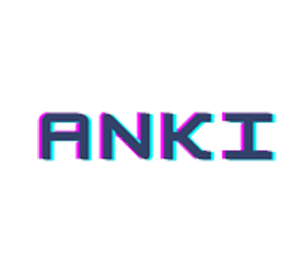The Rise of Crypto-Anarchist Communities on the Dark Web

Crypto-anarchists don’t march in the streets. They write code in silence. They do not hold signs. They hold keys private, distributed, irreversible. To them, revolution isn’t a battle cry. It’s a protocol update.
Long before Bitcoin, before Tor, before Ethereum smart contracts or onion markets, there were manifestos. Words like cypherpunk, crypto libertarian, and digital secessionist described a new kind of resistance—one rooted not in ideology alone, but in the refusal to be surveilled, taxed, or controlled.
On the dark web, these communities evolved from fringe theorists into functioning enclaves. Invisible nations of thought, built in layers of encryption.
The Foundations: From Cypherpunks to Crypto-Anarchists
The origin story begins in the late 1980s. A group of activists, engineers, and philosophers formed the Cypherpunk mailing list. They believed that privacy was essential to a free society, and cryptography was its shield. They created tools—email encryption, anonymous remailers, digital cash prototypes.
Crypto-anarchism emerged from that soil. It fused technological optimism with
radical decentralization. Where cypherpunks focused on tools, crypto-anarchists aimed at infrastructure—economies, governance, identity systems.
Key Texts and Ideas
- “A Cypherpunk’s Manifesto” by Eric Hughes (1993): The ideological cornerstone declaring privacy a right and cryptography a necessity.
- Tim May’s Crypto Anarchist Manifesto: A call for stateless, market-driven information exchange shielded by code.
- David Chaum’s DigiCash: An early attempt to create untraceable digital currency, laying groundwork for later crypto.
Why the Dark Web Became Their Playground
Features That Attracted Crypto-Anarchists
- Anonymity by Design: Tor routing, I2P tunnels, and Monero wallets provided the privacy scaffolding they needed.
- Global Access: Participation was permissionless. A single node could host a networked economy or encrypted forum.
- Hostile to Censorship: Unlike clearnet platforms, takedown requests didn’t apply here. Jurisdiction was irrelevant.
- xperimental Culture: The darknet favored builders and breakers—perfect for crypto-anarchist prototypes.
Building Stateless Infrastructure: Identity, Economy, Law
Systems Under Construction
- Decentralized Identity (DID): Self-sovereign IDs used in darknet marketplaces and forums. Verified through web-of-trust systems, not governments.
- DAO Models: Early experiments in Decentralized Autonomous Organizations governed by smart contracts—voting, fundraising, and code-based law execution.
- Reputation as Currency: Trust scores and cryptographic attestations used in place of fiat or paperwork. Identity was built on behavior, not birth certificates.
- Encrypted Arbitration: Community-driven dispute resolution using multisig wallets and blinded mediators.
Notable Crypto-Anarchist Communities and Platforms
Examples from the Network
- The AnarchoForge Collective: A hidden wiki hub linking to open-source crypto tools, privacy guides, and ideological treatises. Regularly updated with mirrored PDFs and manifesto translations.
- AgorismNet: A dark web DAO where users contributed to decentralized trade infrastructure. Tokenized contribution models, smart escrow, and encrypted identity.
- NoGov Market: A now-defunct marketplace that rejected fiat, enforced ethical vendor rules, and banned any items tied to state or law enforcement.
Conflicts with Other Darknet Cultures
Crypto-anarchists didn’t always align with broader darknet communities. Some resented markets that sold surveillance tech to regimes. Others clashed with nihilist hacker crews or purely profit-driven players.
To the crypto-anarchist, every transaction is political. To others, it’s business.
Cultural Fault Lines
- Ethical Constraints: Crypto-anarchist platforms often banned data breaches or tools used against civilians.
- Anti-Authoritarianism vs. Profit: Some darknet players embraced centralization for convenience. Crypto-anarchists pushed back hard.
- Open Source vs. Obfuscation: While crypto-anarchists released code and philosophy, others preferred closed systems, fearing exploit or theft.
The Myth of the Digital Seastead
For some, the dark web wasn’t just a testbed. It was home. These users didn’t want to return to the clearnet. They believed in total off-grid existence—a form of digital seasteading where freedom lived in code, not constitutions.
They wrote like exiles. Posted like prophets. Built like architects of a state that never was.
Many failed. A few vanished. Some endured.
What Comes Next
Crypto-anarchist communities on the dark web continue to evolve. With tools like zk-SNARKs, distributed VPNs, and quantum-resistant protocols, their vision grows sharper. They don’t see themselves as rebels anymore. They see themselves as inevitabilities.
The state, to them, is a relic. The darknet, just a rehearsal space.
Their real world hasn’t been born yet.
But it’s compiling.

